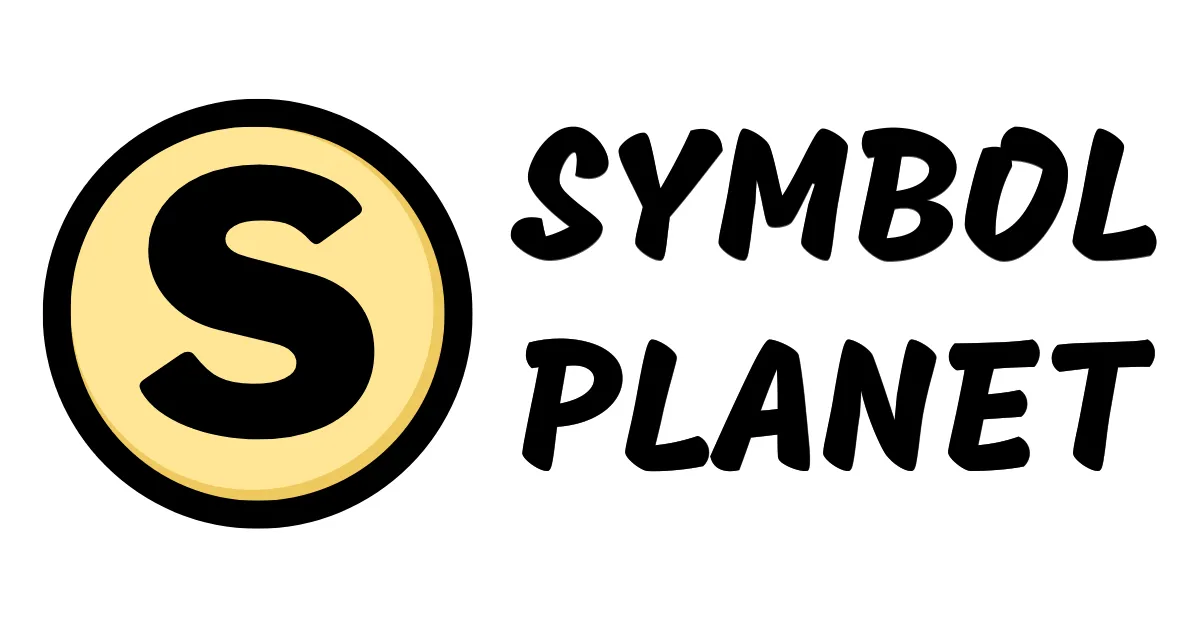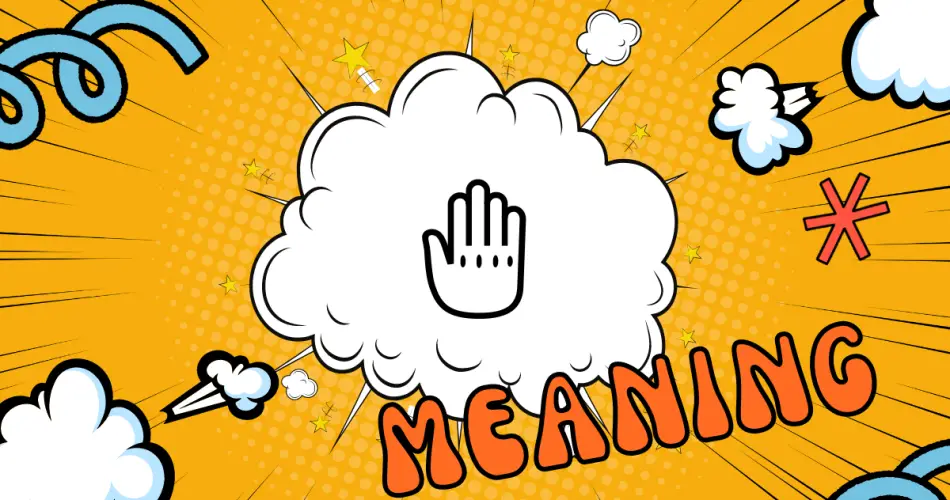Here’s what we’ll cover:
- 🤚 raised back of hand emoji meaning
- How do you reply to 🤚 raised back of hand emoji?
- What does 🤚 raised back of hand emoji mean from a girl?
- What does 🤚 raised back of hand emoji mean from a guy or boy?
- What does 🤚 raised back of hand emoji mean on Snapchat?
- What does 🤚 raised back of hand mean in Texting or Chat?
- What does 🤚 raised back of hand emoji mean on Instagram?
- What does 🤚 raised back of hand emoji mean on TikTok?
- What does 🤚 raised back of hand emoji mean in slang?
- Cultural differences in 🤚 emoji interpretation
- Emoji etiquettes
- Possible combination
- Misinterpretations to avoid
🤚 raised back of hand emoji meaning
The 🤚 raised back of hand emoji means that someone is expressing the need to stop or pause, or it could simply be a gesture of high five or a wave.
1. Stop or pause:
This emoji can be used when you want someone to stop whatever they are doing or saying. It’s like holding up your hand and saying, “Wait a minute!”
- “I told my friend about my new crush and he replied with 🤚, asking me to hold on until he finishes his phone call.”
- “When my boss started giving me extra work on a Friday, I sent her a message with the raised back of hand emoji, implying that I needed a break.”
2. High five:
It can also represent a high five, where you’re celebrating a victory or accomplishment with someone. It’s like saying, “Way to go!”
- “After completing their group project, the team members sent each other the 🤚 emoji to express their triumph.”
- “When my friend aced her exam, I sent her a text with the raised back of hand emoji to congratulate her.”
3. Wave or greeting:
In some cases, the raised back of hand emoji could simply be used as a wave or a friendly greeting, like saying “hello” or “goodbye.”
- “As I was leaving the party, I waved at my friends and sent them the 🤚 emoji to bid them farewell.”
- “When my neighbor saw me across the street, she raised her hand in real life and simultaneously sent me the 🤚 emoji to say hi.”
How do you reply to 🤚 raised back of hand emoji?
When someone raises the back of their hand emoji, it is commonly seen as a dismissive or sarcastic response. For instance, they might say, “Yeah, sure” or “I’ll get right on that” with the raised back of hand emoji. Other examples include “Whatever” or “Like I care.”
- “Yeah, sure” 🤚
- “I’ll get right on that” 🤚
- “Whatever” 🤚
What does 🤚 raised back of hand emoji mean from a girl?
The 🤚 raised back of hand emoji from a girl means: “I am so done with this,” “What are you even talking about?,” or “You’re annoying me.” This emoji is often used to convey frustration, exasperation, or a dismissive attitude. It’s like a virtual hand waving in annoyance or disbelief. So if a girl sends you this emoji, it’s probably a sign that you’re getting on her nerves or she’s tired of the conversation. But hey, don’t take it too seriously, she might just be joking or teasing you. Time to step up your game and make her laugh to get back in her good books!
- “Ugh, not this again. 🤚”
- “I can’t believe you said that. 🤚”
- “Seriously? Do you even listen? 🤚”
What does 🤚 raised back of hand emoji mean from a guy or boy?
The 🤚 raised back of hand emoji from a guy or boy means that he is showing a dismissive or nonchalant attitude. It is often used to convey a lack of interest or enthusiasm towards something or someone. Here are a few examples of how it can be interpreted:
- “Hey, did you hear about the new movie that just came out?” 🤚
- “Wanna grab dinner tonight?” 🤚
- “I need your help with something important.” 🤚
Essentially, this emoji is a way for guys or boys to express indifference or disinterest in a playful and lighthearted manner. It’s their quick and quirky way of saying, “I’m not really into it” or “I couldn’t care less.” So, next time you receive this emoji, don’t take it too seriously, and maybe even respond with a witty comeback!
What does 🤚 raised back of hand emoji mean on Snapchat?
The 🤚 raised back of hand emoji on Snapchat means “give me a high-five!” or “I’m ready to slap you with a virtual high-five!” This emoji is used to express excitement, celebration, or a desire for acknowledgment. It’s like saying, “Yeah, you did it!” or “Nice job!” Imagine seeing your friend acing a test, and you respond with this hand emoji to show your admiration. Or maybe you just want to celebrate a small victory, like finding the last slice of pizza in the fridge. So, go ahead and use this emoji to high-five your friends virtually without the risk of hand injuries or awkward palm-slapping moments.
What does 🤚 raised back of hand mean in Texting or Chat?
The raised back of hand emoji in texting or chat means indecision, uncertainty, or a shrug. It’s like saying, “I’m not sure,” or “I don’t know what to do.” For example, if someone asks you where you want to go for dinner and you’re open to suggestions, you can respond with 🤚. It’s also used to express a lack of knowledge or information, such as when someone asks a tricky question and you’re stumped. Think of it as the WhatsApp and Twitter version of throwing your hands up in the air and saying, “I have no idea!” So, if you see this emoji, it’s like a digital representation of someone shrugging their shoulders and admitting defeat.
- “Hey, do you know the answer to question 5?” 🤚
- “Should I wear a dress or jeans to the party tonight?” 🤚
- “What time should we meet up tomorrow?” 🤚
What does 🤚 raised back of hand emoji mean on Instagram?
The 🤚 raised back of hand emoji on Instagram means “stop” or “talk to the hand”. It is often used to convey a sense of dismissiveness, sarcasm, or simply to playfully brush someone off. Imagine someone waving their hand at you, but instead of a friendly greeting, it’s a sassy gesture telling you to hold up or go away.
- “Hey, guess what? I just won the lottery! 🤚”
- “Can’t deal with your drama right now 🤚”
- “I asked him out, and he said no 🤚”
This emoji is a creative way to show your indifference or resistance to someone’s words or actions. It’s like saying, “I’m not interested” or “I’ve had enough, thank you very much.” So, next time you want to give someone a virtual high-five with some attitude, raise that back-of-hand emoji and let them know you’re not having it.
What does 🤚 raised back of hand emoji mean on TikTok?
The 🤚 raised back of hand emoji on TikTok means that the person using it wants to acknowledge or signal that they have experienced something relatable or have something in common with others.
- For example, someone might use the 🤚 emoji in a TikTok video captioned “When you stub your toe and every person watching feels your pain 🤚”
- Another TikTok video featuring the 🤚 emoji could show a funny situation with the caption “That moment when you forget your lines in a school play and everyone’s like 🤚 been there!”
- Someone might also comment on a TikTok video with the 🤚 emoji to show solidarity with the content creator, like “I totally understand what you’re going through 🤚”
Overall, the raised back of hand emoji is a way to join the conversation and express that you’ve been in a similar situation or can relate to what others are sharing.
What does 🤚 raised back of hand emoji mean in slang?
The 🤚 raised back of hand emoji in slang means indifference, dismissal, or annoyance. It’s like a digital way of saying “I don’t really care” or “whatever” without actually typing it out. It’s perfect for those moments when you can’t be bothered to engage in an argument or just want to shrug off a situation. Some slang examples using this emoji include:
- “I asked my friend if they wanted to go out tonight, but they hit me with the 🤚 emoji. Guess they’re not feeling it.”
- “Tried to explain my point in the group chat, but all I got in response was a bunch of 🤚 emojis. They clearly think I’m talking nonsense.”
- “When my mom asked me to do my chores for the third time, I replied with a single 🤚 emoji. Safe to say she wasn’t too thrilled.”
Cultural differences in 🤚 emoji interpretation
Cultural differences often lead to amusing interpretations of the 🤚 raised back of hand emoji, causing confusion and amusement across the globe.
- “In America, the 🤚 emoji is a casual way to say ‘hi’ or ‘bye’, but in some Middle Eastern countries, it can be seen as an offensive gesture.”
- “While some Europeans may interpret the 🤚 emoji as a friendly wave, in Japan it’s commonly used to represent a slap on the forehead when someone does something foolish.”
- “In Brazil, the 🤚 emoji is frequently used to indicate ‘stop’ or ‘enough’, whereas in Russia it is associated with a toast or a welcoming gesture.”
Emoji etiquettes
When using the 🤚 raised back of hand emoji, remember to keep it cool by using it sparingly and appropriately amidst conversations and digital interactions. Also, never underestimate the impactful pause it adds before delivering the final punchline during a chat, like ‘Why did the scarecrow win an award? Because he was outstanding in his field!’ 🤚
- “Mom: Can you do the dishes? Me: Sorry, I have 🤚dishophobia.” 🤚
- “Friend: Wanna hang out? Me: Not today, I’m 🤚booked!” 🤚
- “Boss: Can you work overtime? Me: 🤚No can do, I have a guitar lesson with Jimmy Hendrix!” 🤚
Possible combination
Possible emoji combinations that go with 🤚 raised back of hand emoji include 🙏 folded hands emoji, ✋ raised hand emoji, and 📝 memo emoji.
- “🙏 High five for asking politely for something”
- “✋ Give me a hand, I need some assistance”
- “📝 Taking notes on how awesome this conversation is”
Misinterpretations to avoid
Misinterpretations to avoid for the 🤚 raised back of hand emoji: It does not mean “I surrender” or “I’m slapping you.”
- “Hey, could you pass the salt?” – 🤚 “No, I’m slapping you!”
- “Are you ready for the meeting?” – 🤚 “Yes, I surrender!”
- “Can you catch this ball?” – 🤚 “No, I surrender to your throwing skills!”

